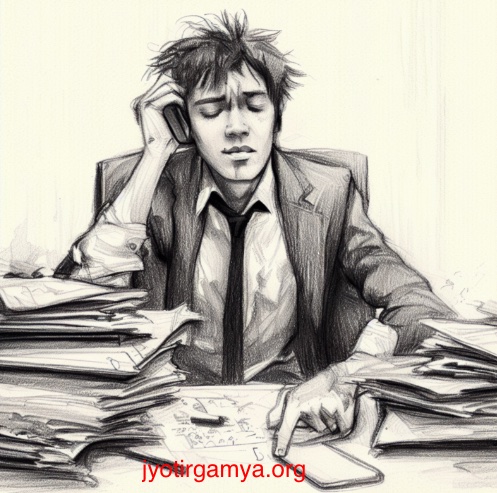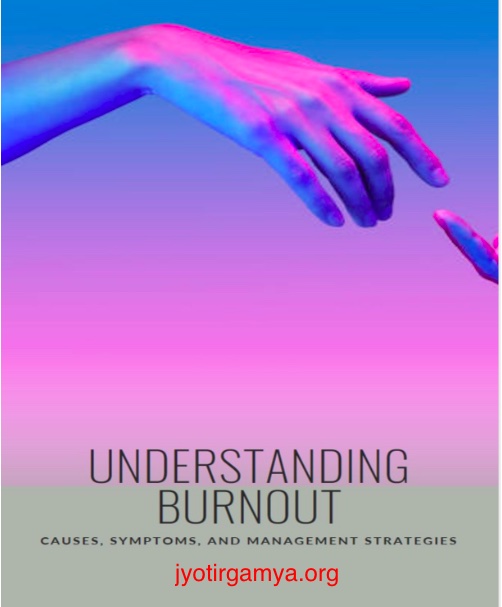Understanding Burnout: Causes, Symptoms, and Management Strategies
Story
John had always taken his job as a fraud investigator seriously. He knew that his work was crucial in ensuring that the people of his State who were in need received the financial assistance they deserved. But nothing could have prepared him for the overwhelming workload that COVID-19 brought.
As he walked into his office on the first day of the pandemic, John could already tell that things would be different. His team was pulled from their usual duties to help process the massive number of UI claims that flooded in. The phone lines were jammed with thousands of people waiting to be assisted, and piles of mail were stacked up for John and his team to sort through.
“John, you’re gonna need more than just coffee to get through today,” his coworker joked as they looked at the sea of people waiting on the phone lines.
“I know, right? I’m already on my third cup,” John replied with a tired laugh.
But as the days went on, the workload became more demanding. John’s usual shift turned into a grueling 5:30 am to 8 pm, with little time for breaks or rest. And yet, he and his team pressed on, determined to help as many people as possible.

One afternoon, John’s fiancé found him collapsed on the bedroom floor. He had had a seizure, and his heart had stopped. The ambulance arrived just in time, and the EMTs were able to revive him.
“John, you need to take a break. You can’t keep pushing yourself like this,” his fiancé pleaded with him as he lay in his hospital bed.
“I know, I know. But I can’t just abandon these people who need my help. They’re counting on me,” John replied, his voice strained and weak.
After a few days of rest, John realized that he couldn’t keep putting his health at risk for the sake of the job. So he decided to leave his position, knowing that he had done all he could to help the people of his State during a difficult time.
“I just can’t do it anymore. My body can’t take it,” John told his boss, who nodded sympathetically.
“I understand, John. You’ve been working tirelessly, and we appreciate everything you’ve done for us. But we need help to keep up with the demand,” his boss replied.
“I know, but I must put my health first,” John said firmly.
As John packed up his things and said goodbye to his coworkers, he knew he had made the right decision. He had done his best to help the people of his State during a difficult time, and now it was time for him to focus on his health and well-being.
Introduction
Burnout is prevalent in high-stress environments. Understanding its causes, symptoms, and effective management strategies is essential. Mental health experts have shared insights on burnout, including the Looking Forward Tool, setting boundaries, practicing self-care, and being aware of burnout’s impact. Companies must provide support and guidance to employees experiencing burnout. Raising awareness and taking proactive steps can help prevent and manage burnout.
Burnout Causes
- High workload and job demands
- Lack of autonomy or control over work
- Inadequate support from coworkers or management
- Conflicting demands and values
- Insufficient work-life balance
- Lack of recognition or reward
Symptoms of Burnout
- Emotional exhaustion
- Reduced performance and productivity
- Cynicism and detachment
- Physical symptoms (e.g., headaches, fatigue, insomnia)
- Interpersonal difficulties
- Substance use or other maladaptive coping strategies
Effective Strategies for Managing Burnout
- Practice self-care (e.g., exercise, meditation, hobbies)
- Set boundaries and prioritize self-care
- Seek social support and connection
- Engage in mindfulness-based interventions
- Practice cognitive-behavioral techniques (e.g., reframing negative thoughts)
- Seek professional help if necessary.

Expert Advice
“To manage burnout, enhance your mood, and boost your vitality, you could attempt a helpful technique called the Looking Forward Tool.
First, perhaps for several minutes, imagine a fulfilling event or a joyful experience ten years in the future – perhaps the birth of a baby, an exciting award, or some other coveted aspiration.
Then, imagine another fulfilling event for several minutes, a year or two earlier. You could imagine a blissful wedding, an exciting work opportunity, or some other event that increased the likelihood of the previous experience you envisaged.
Over the next few days, repeat this task quite a few times, imagining events that are gradually closer to your life now.
This activity has been shown to improve well-being significantly and diminish burnout.
Extract from Shen, C with Moss, S (2021, 2nd edition) ‘Wrestling with Resilience’
“For many, burnout comes down to setting boundaries. We all have limits. A good example is the parents I work with who sacrifice themselves for their children.
However, I remind these parents that one of their roles is to teach their children about limits and how adults must practice self-care to model that skill for their children. I often ask, “What are you modeling for your child?”
“We need to understand burnout is accurate and that we seldom recognize it - in others and ourselves. Therefore we should always keep it in mind so that our awareness of it is helped.
People should be thanked daily for their work, and we must stay aware that we are all human beings before we are workers and colleagues. If we respect that in ourselves and each other, we go a long way towards combating burnout.”
“One point I have learned about burnout is that, unlike mental health illnesses, burnout is described as a syndrome. Therefore, in terms of how it is managed, companies must be cautious about advising an employee suspected of having burnout to go home to rest or engage in hobbies simply. This can be potentially unsafe advice as someone with burnout feels unable to undertake any meaningful work or social activity and simply feels emotionally, mentally, and physically exhausted and incapacitated.
Companies should be advised to recommend that the employee remains at work but on lighter duties and with regular supervision.”
Conclusion
In conclusion, burnout is a serious issue that can impact an individual’s mental and physical well-being. The opinions of mental health experts provide practical ways to manage burnout, such as practicing self-care, setting boundaries, and using tools like the Looking Forward Tool. Companies need to recognize burnout and appropriately support employees experiencing it by being aware of burnout and actively managing their lives.
That’s all in this issue. If you like what we are doing, do spread the word.
Want to stay connected? Here’s our twitter.
FAQs on Workplace Burnout
Early signs of burnout include emotional exhaustion, reduced performance, cynicism, detachment, and physical symptoms like headaches and fatigue. Recognizing these signs early can help in taking preventive measures.
Companies can prevent burnout by encouraging work-life balance, providing mental health resources, recognizing employees' efforts, and fostering a supportive and inclusive workplace culture. Regular check-ins and flexible work arrangements can also help.
Yes, high-stress industries like healthcare, finance, and customer service, as well as roles with high demands and low control, such as teachers and first responders, are more prone to burnout. Awareness and proactive management are crucial in these sectors.
Burnout is a syndrome characterized by emotional exhaustion, cynicism, and reduced performance, often related to work stress. Depression and anxiety are broader mental health conditions that can be influenced by various factors, including personal and biological aspects. Professional diagnosis and treatment may vary accordingly.
Lifestyle changes such as exercise, mindfulness, and setting boundaries can help manage burnout. However, severe cases may require professional help, including therapy or medical intervention. Combining both approaches can be most effective.
Managers can recognize burnout by observing changes in behavior, performance, and engagement. Addressing it involves open communication, offering support, adjusting workloads, and providing resources for mental health and stress management.
Employees can set boundaries by clearly communicating their limits, prioritizing tasks, and seeking support from supervisors. It's important to frame boundary-setting as a way to maintain productivity and well-being, which benefits both the employee and the organization.
Company culture significantly impacts burnout. A culture that values work-life balance, recognition, and employee well-being can alleviate burnout. Conversely, a toxic or high-pressure culture can contribute to it. Leadership commitment to a healthy work environment is key.
Essential Reads
Perfectionism Paralysis: Unleashing Innovation with Servant Leadership
Servant Leadership Strategies for a Healthy, Productive Workplace
The Ultimate Guide to Remote Work Burnout : 10X Bee vs 0.1X Butterfly
The 10X Rule Unveiled: Exploring Grant Cordone’s Approach to Success and Evidence-Based Alternatives
How to Manage Burnout : Strategies for a Healthier Work-Life Balance
The Fallout of Toxic Leadership: A Story of Burnout and Redemption